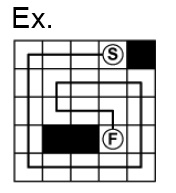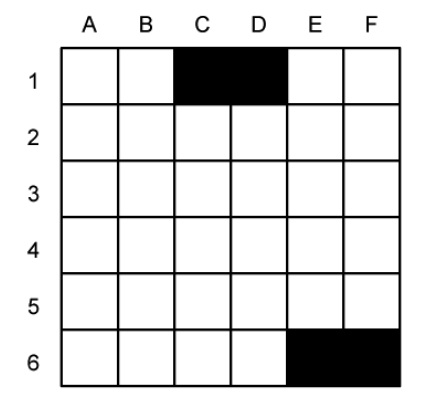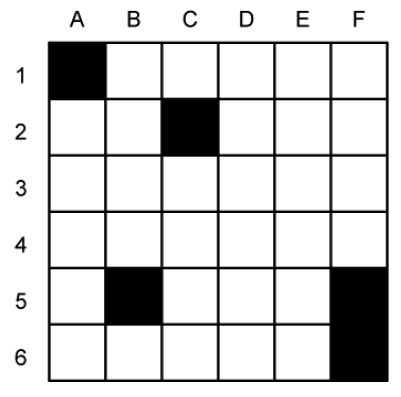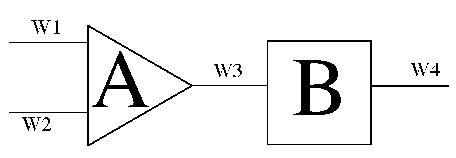| Written Homework #4 Due April 12 1. [17] State Based Search (again). I was dissapointed with the class's performance on simple state-based search (everything in AI is a search problem!). Let's practice one more time [this, from the 2006 Google Puzzle Challenge]: "Full House" puzzle: for each puzzle, find the starting square and draw a path moving horizontally and vertically that passes through each open square exactly once. For each straight segment in the path, you must go as far as possible, changing direction only when you are blocked by the grid's edge, a black square, or a square already visited.
2. [26] Commonsense knowledge representation: Consider the following argument:
In this problem, you will axiomatize the commonsense knowledge used in this argument and provide a formal first-order logic derivation of this argument. Note: In this problem, you will use a continuous notion of time rather than the notion of discrete time steps.
3. [17] Diagnostic Reasoning. The following logic circuit has four wires, W1, W2, W3, and W4. It has an "AND gate", A, and an "inverter", B. The input wires, W1 and W2, can be either "on" or not. If the AND gate A is functioning properly (OK), wire W3 is "on" if and only if wires W1 and W2 are both "on". If the inverter B is functioning properly (OK), wire W4 is "on" if and only if wire W3 is not "on".
5. [6] Using situation calculus, write sentences [i.e. possibility axioms and successor-state axioms] to describe the logical effects of a "SHOOT" action in the Wumpus World. Remember that in situation calculus that sucesssor-state axioms are oriented around descriptions of fluents, not actions. Possibility axioms capture the action preconditions. Assume that the agent has only one arrow with which to shoot. 6. [24] STRIPS-style Planning.
Problem 11.4 in the book (Monkey & Bananas). 7. [10] Problem 11.11 from the textbook (Sussman's Anomaly). |
||



